Life
Born at Norwich on 4 September 1817, he was second son and second child of the six children of Philip Barnes, an architect, by his wife Harriet Futter, daughter of a Norfolk squire. Educated at Bruges from 1826 to 1830 and at home, where one of his tutors was George Borrow, Barnes began his medical career in 1832 as an apprentice in Norwich to Dr. Richard Griffin. When his family moved to London he studied at University College, the Windmill Street school, and at St. George's Hospital. [1]

Norwich is a historic city in Norfolk, England. Situated on the River Wensum in East Anglia, it lies approximately 100 miles (161 km) north-east of London. It is the county town of Norfolk and is considered the capital of East Anglia, with a population of 141,300. From the Middle Ages until the Industrial Revolution, Norwich was the largest city in England after London, and one of the most important.

Bruges is the capital and largest city of the province of West Flanders in the Flemish Region of Belgium, in the northwest of the country.

George Henry Borrow was an English writer of novels and of travel books based on his own experiences in Europe. During his travels, he developed a close affinity with the Romani people of Europe, who figure prominently in his work. His best-known books are The Bible in Spain, the autobiographical Lavengro, and The Romany Rye, about his time with the English Romanichal (Gypsies).
Becoming a member of the Royal College of Surgeons in 1842, Barnes spent a year in Paris, where he concentrated on mental illness; on his return to London he settled in general practice in Notting Hill. His ambition at this point was to become a medical teacher: he lectured at the Hunterian School of Medicine and on forensic medicine at Dermott's School, and was obstetric surgeon to the Western general dispensary. He graduated M.D. London in 1848, and in 1853 became L.R.C.P. and in 1859 F.R.C.P. [1]
A Royal College of Surgeons or Royal Surgical College is a type of organisation found in many present and former members of the Commonwealth of Nations. These organisations are responsible for training surgeons and setting their examinations. In this context, the term chartered implies the awarding of a Royal charter.
On 1 April 1859, Barnes was elected assistant obstetric physician, and on 14 July 1863 obstetric physician, to the London Hospital. He moved on 24 April 1865 to a similar post at St. Thomas's Hospital, where he had lectured on midwifery since April 1862. In 1875, he left St. Thomas's Hospital, where he was dean of the medical school, to become obstetric physician at St. George's Hospital; there he was elected consulting obstetric physician in 1885. He had also acted as physician to the Seamen's Hospital, the East London Hospital for Children, and the Royal Maternity Hospital. [1]
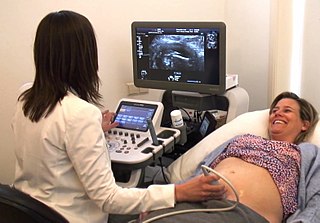
Midwifery is the health science and health profession that deals with pregnancy, childbirth, and the postpartum period, in addition to the sexual and reproductive health of women throughout their lives. In many countries, midwifery is a medical profession. A professional in midwifery is known as a midwife.
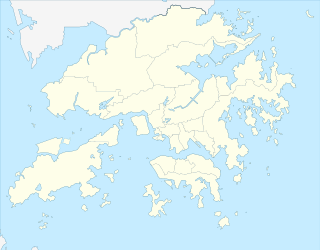
Seamen's Hospital was originally opened by Dr Peter Young, a surgeon of the Honourable East India Company in 1843 during the First Opium War.
Barnes took a prominent part in founding the Obstetrical Society of London in 1858 and was president in 1865–6. But a dispute with the council of this society led him in 1884 to establish the British Gynæcological Society, of which he was honorary president until his death. The older society was hostile to the performance of ovariotomy and other operations by obstetricians. Barnes was one of the pioneers of operative gynæcology, and prevailed: the two societies were united in the obstetrical and gynæcological section of the Royal Society of Medicine in 1907. [1]
The Obstetrical Society of London existed from 1858 to 1907.
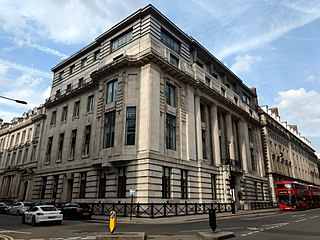
The Royal Society of Medicine (RSM) is one of the major providers of accredited postgraduate medical education in the United Kingdom. Each year, the RSM organises over 400 academic and public events. spanning 56 areas of special interest providing a multi-disciplinary forum for discussion and debate. Videos of many key lectures are also available online, increasing access to the Society’s education programme. The RSM is home to one of the largest medical libraries in Europe, with an extensive collection of books, journals, electronic journals and online medical databases. As well as providing medical education, the Society aims to promote an exchange of information and ideas on the science, practice and organisation of medicine, both within the health professions and with responsible and informed public opinion. The Society is not a policy-making body and does not issue guidelines or standards of care.
At the London College of Physicians Barnes delivered the Lumleian lectures On Convulsive Diseases in Women in 1873 and was censor (1877–8). He was elected honorary fellow of the Royal College of Surgeons in 1883; of the Medical Society of London in 1893 (he had given the Lettsomian lectures in 1858), and of the Royal Medical and Chirurgical Society at the centenary meeting of 1905. [1]

The Medical Society of London is one of the oldest surviving medical societies in the United Kingdom.
A leading teacher and gynæcologist in London, Barnes was a rival of James Matthews Duncan both in debates at the Obstetrical Society, and in practice. He was also a director of the Prudential Assurance Company (1848–9; 1884–1907), amassed a fortune, and gave to medical institutions including St. George's Hospital, where the pathological laboratory was called after him. He died at Eastbourne on 12 May 1907, and was buried there. [1]
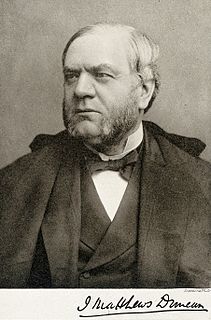
Dr James Matthews DuncanFRS FRSE FRCP FRCPE LLD was a Scottish physician, known as a practitioner of and author on obstetrics.

Eastbourne is a town, seaside resort and borough in the non-metropolitan county of East Sussex on the south coast of England, 19 miles (31 km) east of Brighton. Eastbourne is immediately to the east of Beachy Head, the highest chalk sea cliff in Great Britain and part of the larger Eastbourne Downland Estate.
This page is based on this
Wikipedia article Text is available under the
CC BY-SA 4.0 license; additional terms may apply.
Images, videos and audio are available under their respective licenses.

Naguib Pasha Mahfouz is known as the father of obstetrics and gynaecology in Egypt and was a pioneer in obstetric fistula.

Dame Alice Josephine Mary Taylor Barnes,, known professionally as Dr Josephine Barnes, was a leading English obstetrician and gynaecologist. She was the first female president of the British Medical Association, 1979. Barnes was also active in the Women's National Cancer Control Campaign with cancer screening.
Aleck William Bourne was a prominent British gynaecologist and writer, known for his 1938 trial, a landmark case, for performing an illegal abortion on a 14-year-old rape victim. He later became a pro-life activist.

Sir William Overend Priestley was a British physician and Conservative Party politician. He served as Member of Parliament (MP) for Edinburgh and St Andrews Universities from 1896 to 1900.

Arthur Farre FRS was an English obstetric physician.
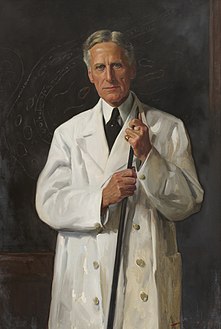
William Blair-Bell was a British medical doctor and gynaecologist who was most notable as the founder of the Royal College of Obstetricians and Gynecologists in 1929. Blair-Bell was considered the greatest gynaecologist of the 20th century, raising it from what was then a branch of general surgery into a separate medical specialism. He was subject of a biography by Sir John H. Peel.

Sir Alfred Pearce Gould was Dean of the Faculty of Medicine of the University of London from 1912–1916 and was Vice-Chancellor of the university from 1916–1917. He was also a Fellow and Member of Council of University College London.

Sir Sabaratnam Arulkumaran is a Sri Lankan Tamil physician, former president of the Royal College of Obstetricians and Gynaecologists and the International Federation of Gynaecology and Obstetrics, and president-elect of the British Medical Association.

Dr William Smoult Playfair FRCP was a leading Scottish obstetric physician and academic. In 1896 a trial found against him for a breach of medical confidentiality.
Charles James Cullingworth (1841–1908) was an English gynaecologist and obstetrician.
Frank Cook FRCS FRCOG was a Beit Memorial Research Fellow, an obstetric and gynaecological surgeon at Guy’s Hospital, Hunterian Professor of the Royal College of Surgeons in London, consulting surgeon at the Chelsea Hospital for Women and a Freeman of the Worshipful Society of Apothecaries.
Charles Hubert Roberts FRCS FRCP (1865-1929) was a British surgeon, physician and lecturer in the fields of gynaecology and obstetrics. He was highly regarded for his diagnostic and surgical skills and was considered to have been an inspiring teacher. He served as Senior Physician to the Samaritan Free Hospital for Women and Physician to In-Patients at Queen Charlotte's and Chelsea Hospital
Francis James Browne (1879-1963) was professor of obstetrics and gynaecology and first director of the obstetric unit at University College Hospital, London, which was opened in 1926. He was known as ‘FJ’.
Roy Samuel Dobbin was professor of midwifery and gynaecology at the Royal School of Medicine in Cairo and was obstetric surgeon and gynaecologist to Kasr-el-Aini Hospital. During the First World War he served as an officer with the Royal Army Medical Corps in France. He was a founding fellow of the Royal College of Obstetricians and Gynaecologists.
Thomas Watts Eden FRCOG was consulting obstetric physician to Charing Cross Hospital and consulting surgeon to both Queen Charlotte's Hospital and the Chelsea Hospital for Women. During the First World War he served as a major with the Royal Army Medical Corps. He was a founding fellow of the Royal College of Obstetricians and Gynaecologists.
John R. Fraser FRCOG (1890-1959) was a physician on the staff of the Obstetric and Gynaecological Department at McGill and in 1929, professor, chairman and head of department at McGill and Royal Victoria Hospital.
Sir William Gilliatt FRCOG FROCS (1884-1956) was a gynaecologist at the Middlesex Hospital and King's College Hospital, London.
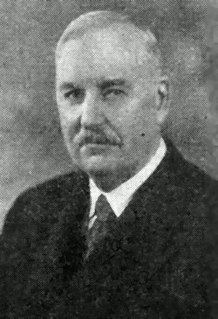
Herbert Ritchie Spencer was professor of obstetrics at University College London.
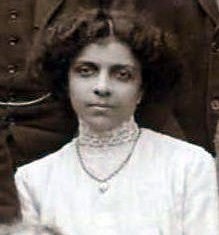
Dossibai Rustomji Cowasji Patell MBE, later known as Dossibai Jehangir Ratenshaw Dadabhoy, was an Indian obstetrician and gynaecologist, who in 1910 became the first woman to become a member of the Royal College of Surgeons of England (RCS).



















